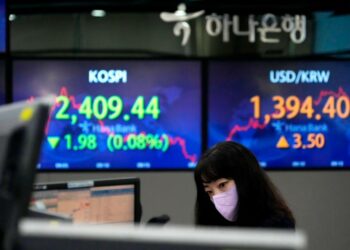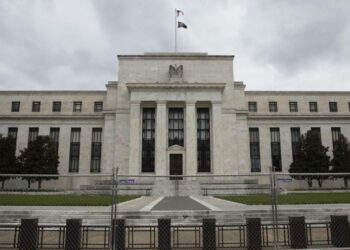The writer is head of Japan FX Strategy at JPMorgan
The Japanese yen has been an unexpected casualty of a global lurch towards higher interest rates. The currency is down about 15 per cent against the dollar this year, and relative to a broader basket of currencies, the yen is tracking lows not seen since the 1970s.
Currency traders in Tokyo are quick to highlight the proximate cause for the yen’s slide as a simple story of monetary policy divergence: high US yields, low Japan yields. While the US Federal Reserve has embarked on what looks set to be its fastest pace of monetary policy tightening since the 1990s, the Bank of Japan has been resolute in its defence of sustained policy easing.
Governor Haruhiko Kuroda’s argument has been as straightforward as it has been unwavering. Low Japanese inflation does not necessitate a rise in domestic interest rates on anywhere near the scale of the Fed — at least not yet. With yields pinned down by a central bank that already owns half of the government bond market, the yen has found itself as the principal release valve for a widening gap between US and Japanese interest rates.
As currency weakness accelerates, so is the chorus of contrarian recommendations to buy the yen becoming louder. What better than a cheap haven currency to hedge against an increasingly uncertain global outlook? And this is where the debate lies. The yen is certainly weak. But is it also cheap?
Investors should be wary of arguments that imply the yen is grossly undervalued. These fail to take into account structural changes in Japan’s economy that have fundamentally altered the trading backdrop for the yen. By far the most important of these is a multiyear shift in Japan’s import and export balance.
Japan registered its second-widest monthly trade deficit on record in May, partly because of surging energy and commodity imports. But the economy’s long-term flip from trade surplus towards deficits reflects broader forces at work. A decade of Japanese corporate offshoring of factories has knocked the wind out of exports.
Not all that long ago Japan provided the template of high-tech export-led growth to its neighbouring economies — the Asian Tigers. But Japan now imports more electronics goods from the rest of Asia than it exports back to the region. Put simply, Japan Inc needs more foreign currency to pay for imports than it earns via exports: a fundamentally negative dynamic for the yen.
Equally, investors should be sceptical of claims that the yen is a reliable hedge against rising market volatility. Major US equity indices are already in bear market territory. And yet the yen has traded materially weaker.
The yen’s failure to live up to its haven credentials thus far is partly because of a decline in the popularity of the yen “carry trade” — using the currency to fund purchases of higher-yielding assets elsewhere. Faced with a plethora of low-to-negative yielding currencies over the past decade, traders simply have not borrowed the yen on anywhere near the same scale as they did before the financial crisis. BoJ data suggest that foreign banks’ yen borrowing from their Tokyo subsidiaries — a measure of foreign demand for funding in the currency — is barely 40 per cent of its pre-financial crisis peak.
The financial crisis prompted a rush to dump risky assets, catalysing a rapid unwinding of yen-funded trades, and fuelling a stellar 19 per cent move higher in the currency against the dollar through early 2008. Now, in times of market stress, there is no longer a rush to buy back the yen to “cover” positions.
What can save the yen? Currency intervention is certainly not the answer, because yen weakness reflects fundamental forces, not speculative activity. A capitulation from the BoJ to allow domestic government bond yields to rise would narrow the differential between the US and Japan interest rates. This would provide the yen with a short-term tailwind, as would signs of a peak in US yields. A reopening of Japanese borders to tourists would also help.
But rather than signalling a long-term inflection for the Japanese currency, these factors suggest its volatility will remain high. A return to a sustainable period of yen appreciation will ultimately require a fundamental shift in the composition of Japanese trade flows. A restart of idle nuclear power plants that would reduce energy import demand could be one driver, perhaps; longer-term, a re-onshoring of factories back to Japan, undoubtedly, would paint a rosier picture for the currency. But these would also need significant policy shifts that transcend pure economic considerations.










